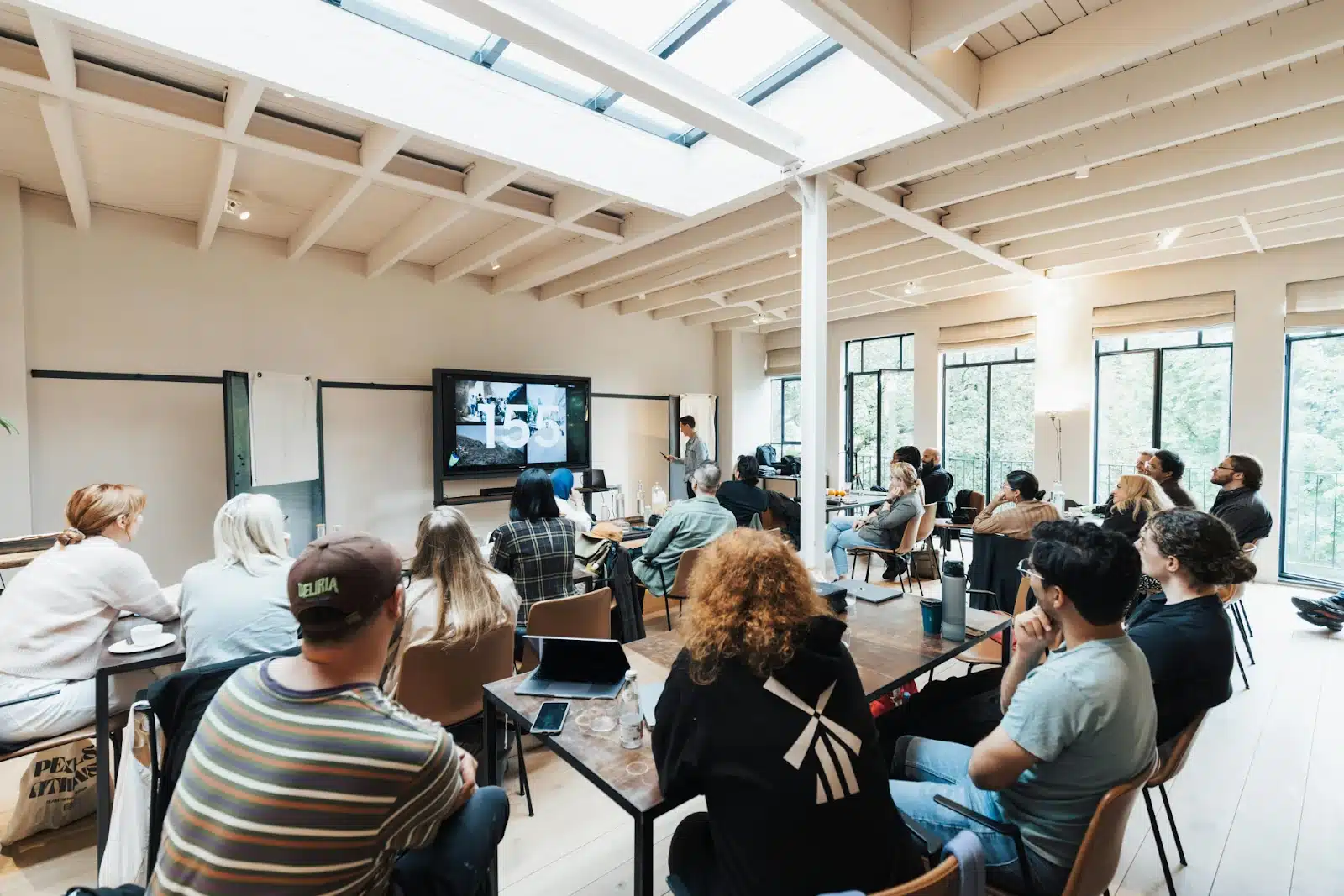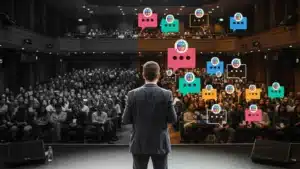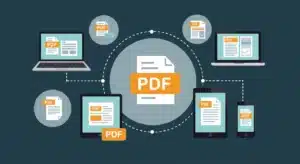
Multimedia Presentation Tips That Capture Attention and Drive Response
In an age where attention spans are dwindling, the art of delivering an engaging multimedia presentation has never been more crucial. Whether it’s a sales pitch, a training session, or a public speaking event, capturing and maintaining your audience’s attention can significantly impact the outcome of your presentation. Here are some practical tips to ensure your multimedia presentations not only captivate your audience but also drive meaningful responses.
Understanding Your Audience
Before diving into the creation of your multimedia presentation, it’s essential to understand who your audience is. Tailoring your content to meet the specific needs and interests of your audience can dramatically enhance engagement levels.
Consider the demographics, preferences, and pain points of your audience. For example, if you’re presenting to a group of tech-savvy professionals, incorporating advanced technology and innovative solutions will resonate better than basic concepts. This understanding allows for a more personalized approach, making your presentation more relevant and impactful. Additionally, recognizing the cultural backgrounds and professional experiences of your audience can further refine your message, ensuring that it aligns with their values and expectations.
Creating Personas
Developing audience personas can be a valuable exercise. For instance, imagine Jamie, a sales manager at a fast-growing tech company. Jamie seeks to engage her audience during presentations, but often struggles with participation, especially in virtual settings. By identifying such personas, presenters can craft messages that speak directly to the challenges and aspirations of their audience.
In Jamie’s case, interactive elements and real-time engagement tools can transform her presentations into dynamic conversations, ensuring that every participant feels involved and valued. Furthermore, incorporating relatable case studies or success stories that resonate with Jamie’s industry can enhance the relatability of the content. By showcasing real-world applications of the concepts being discussed, presenters can bridge the gap between theory and practice, making the information more digestible and actionable for the audience.
Moreover, leveraging analytics tools to gather insights on audience behavior and feedback can provide a deeper understanding of their preferences. This data-driven approach allows presenters to refine their content continuously, adapting to the evolving needs of their audience. By staying attuned to audience reactions and engagement levels, presenters can make real-time adjustments, ensuring that their message remains impactful and relevant throughout the presentation.
Utilizing Multimedia Effectively
Multimedia elements, such as videos, images, and animations, can significantly enhance the storytelling aspect of your presentation. However, it’s crucial to use these elements judiciously to avoid overwhelming your audience. Striking the right balance between multimedia and spoken content is essential to ensure that your message is not lost in a sea of visuals.
Incorporating high-quality visuals that complement your message can help retain attention. For instance, a well-placed video can illustrate a complex concept more effectively than text alone. Additionally, using animations to highlight key points can keep the audience engaged without detracting from the main message. Consider using transitions that are subtle yet effective, as they can guide the audience’s focus without causing distraction.
Balancing Text and Visuals
A common mistake in multimedia presentations is overcrowding slides with text. Instead, aim for a balance between text and visuals. Use bullet points to summarize key ideas while allowing visuals to convey additional context. This approach not only makes slides more visually appealing but also aids in information retention. Remember that the human brain processes images much faster than text, so leveraging this fact can enhance understanding.
For example, when presenting statistics, consider using infographics instead of raw numbers. Infographics can simplify complex data, making it easier for your audience to grasp and remember. Moreover, incorporating interactive elements, such as clickable charts or polls, can foster engagement and allow your audience to participate actively in the presentation. This not only makes the experience more enjoyable but also reinforces the information being shared, leading to a deeper understanding of the topic at hand.
Engaging Your Audience
Active audience engagement is critical for a successful presentation. One effective way to achieve this is by incorporating interactive elements that encourage participation.
For instance, using audience polling or Q&A sessions can transform a one-way presentation into a two-way dialogue. This not only allows for immediate feedback but also fosters a sense of community among participants. Engaging your audience in this manner can lead to increased retention of information, as participants feel more invested in the content being presented. When they have the opportunity to voice their opinions or ask questions, they are more likely to remember the material long after the presentation has concluded.
Real-Time Q&A with AI
Employing AI-powered tools can streamline the Q&A process, making it easier for presenters to address audience questions in real-time. PresEngage utilizes AI to provide instant answers based on the presentation content, ensuring that no question goes unanswered. This technology not only enhances the efficiency of the Q&A session but also allows presenters to focus on delivering their message rather than getting bogged down by repetitive questions.
This hands-free Q&A approach not only alleviates the pressure on the presenter but also enhances the overall experience for the audience. Participants can engage via SMS, making it easy for everyone to contribute without the need for additional apps or logins. Furthermore, this method of interaction can be particularly beneficial in large presentations where traditional methods of raising hands or shouting out questions may not be feasible. By allowing audience members to submit questions anonymously, it encourages more candid inquiries, leading to richer discussions and deeper insights into the topic at hand. The integration of AI in this context not only modernizes the presentation experience but also empowers participants, making them feel like integral parts of the conversation.
Incorporating Storytelling Techniques
Storytelling is a powerful tool in presentations. By weaving a narrative into your multimedia content, you can create an emotional connection with your audience. This connection can lead to higher engagement and retention rates. When people hear a story, they are not just passively receiving information; they are actively participating in the experience, which can lead to a deeper understanding of the material being presented.
Consider starting your presentation with a compelling story that relates to your main message. This could be a personal anecdote, a case study, or even a hypothetical scenario that illustrates the problem you are addressing. By framing your content within a story, you provide context that makes your message more relatable and memorable. For instance, if you are presenting on the importance of sustainability, sharing a story about a community that successfully implemented eco-friendly practices can inspire your audience and give them a tangible example of the impact of their choices.
Using Analogies and Metaphors
Analogies and metaphors can also enhance understanding. They help to simplify complex ideas by relating them to familiar concepts. For example, if discussing a new technology, comparing it to a well-known product can make it easier for your audience to grasp its significance. This technique not only clarifies your points but also engages your audience’s imagination, allowing them to visualize the concepts you are presenting.
Additionally, using relatable language and examples can further bridge the gap between your content and your audience’s experiences, making the presentation feel more personal and engaging. For instance, when explaining a challenging financial concept, likening it to everyday budgeting practices can demystify the topic. This approach encourages audience members to draw parallels to their own lives, fostering a sense of connection and relevance. Moreover, incorporating humor or light-hearted anecdotes can also serve to break the ice and make your presentation more enjoyable, ultimately leading to a more receptive audience.
Call to Action: Driving Responses
Every presentation should culminate in a clear call to action (CTA). This is your opportunity to guide your audience on the next steps you want them to take. Whether it’s signing up for a newsletter, scheduling a follow-up meeting, or making a purchase, a well-defined CTA can drive responses and conversions.
Ensure that your CTA is specific, actionable, and relevant to the content of your presentation. For instance, if your presentation focuses on a new product, your CTA could encourage attendees to sign up for a free trial, allowing them to experience the product firsthand. This not only provides them with a tangible next step but also creates a sense of urgency and excitement around the offering, making it more likely that they will engage.
Automated Follow-Ups
To maximize the effectiveness of your CTA, consider utilizing automated follow-up tools. PresEngage offers features that capture audience contact information and enable thoughtful follow-ups based on the conversation context. This ensures that every engagement opportunity is nurtured without adding extra workload for the presenter.
By automating follow-ups, presenters can maintain the momentum created during the presentation, increasing the likelihood of converting interest into action. Furthermore, these tools can segment your audience based on their responses, allowing for tailored messaging that resonates more deeply with each individual. For instance, if a segment of your audience shows particular interest in a specific feature of your product, you can send them targeted content that highlights that feature, thereby enhancing their engagement and likelihood of conversion.
Additionally, integrating analytics into your follow-up strategy can provide valuable insights into audience behavior. By tracking which CTAs are clicked most frequently or which follow-up emails receive the highest open rates, you can refine your approach over time. This data-driven strategy not only helps in crafting more compelling CTAs but also allows you to understand your audience’s preferences better, ensuring that your future presentations are even more effective in driving responses.
Analytics: Measuring Engagement and Success
Post-presentation analytics are crucial for understanding the effectiveness of your multimedia presentation. By tracking engagement metrics, presenters can gain insights into what worked well and what areas need improvement. This data can include various elements such as the average viewing time, the number of participants who interacted with polls, and the overall sentiment expressed in feedback forms. By analyzing these metrics, presenters can form a clearer picture of audience engagement and identify which segments of their presentation resonated most with viewers.
Tools that provide analytics on audience participation, question volume, and feedback can help in tailoring future presentations. For example, if analytics reveal that specific topics generated more questions, presenters can adjust their content to focus on these areas in subsequent sessions. Additionally, understanding the timing of audience engagement can be beneficial; if certain sections of the presentation see a drop in attention, it may indicate the need for more dynamic content or interactive elements to maintain interest. By leveraging these insights, presenters can create a more compelling narrative that captivates their audience from start to finish.

Continuous Improvement
Utilizing feedback from analytics not only enhances future presentations but also demonstrates to your audience that their opinions are valued. This feedback loop fosters a culture of continuous improvement, ensuring that each presentation becomes more engaging and effective over time. By actively seeking out and implementing suggestions, presenters can build a reputation for responsiveness and adaptability, which can lead to increased trust and loyalty from their audience.
Moreover, by sharing insights gained from analytics with your audience, you can further enhance the relationship, showing that you are committed to delivering value and addressing their needs. For instance, presenting a summary of key engagement metrics during a follow-up session can illustrate how their input has shaped future content. This transparency not only reinforces the importance of audience feedback but also encourages more active participation in future presentations, as attendees feel a sense of ownership and investment in the process. By creating this collaborative environment, presenters can cultivate a community that thrives on shared knowledge and continuous learning.
Ready to Revolutionize Your Presentations?
In conclusion, multimedia presentations have the potential to transform the way information is shared and received. By understanding your audience, utilizing multimedia effectively, engaging participants, incorporating storytelling techniques, and measuring success through analytics, presenters can create compelling experiences that drive responses and foster meaningful connections.
As the landscape of presentations continues to evolve, embracing innovative tools and techniques will be essential.
Embrace the future of audience engagement with PresEngage, the only platform that combines AI-powered real-time Q&A with CRM-able data for your presentations. Say goodbye to technical hiccups and microphone anxiety, and hello to seamless, interactive discussions. Whether you’re a presenter, educator, trainer, or business professional, PresEngage is designed to help you capture attention and drive responses effortlessly. Elevate your multimedia presentations and start for FREE today to turn your audience’s attention into actionable results.
Present Smarter. Engage Answer Convert Close Remarkably.
Dazzle your audience with Real-Time Q&A powered by your AI Co-Presenter.(Patent Pending)
PresEngage™ makes you look brilliant by connecting with everyone, instantly.
No Credit Card Required. 100% Risk Free.
Frictionless Audience Experience GUARANTEED.






